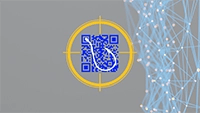-
Why IRONSCALES
OUR VALUE
-
Protect Better
Gain protection against advanced email attacks like BEC, ATO, social engineering, and more
-
Simplify Operations
Turn hours-a-day to minutes-a-month combatting phishing with customizable security automation
-
Empower Your Org
Triple your org's email security awareness with real-world phishing simulation testing and training
CUSTOMERS
-
-
Platform
Spring '24 Software Release! Check out our new deep image-based detection, GWS capabilities, and more. Explore the new additions
CAPABILITIES
-
Inbound Email Protection
Get Adaptive AI email security against advanced attacks missed by other security controls
-
Account Takeover Protection
Eliminate the risk of ATO with advanced prevention, detection, and response
-
Image-Based Attack Protection
Protect your organization from image-based attacks like malicious QR codes
-
SOC Automation
Put SecOps workloads on auto-pilot with automated email remediation and more
-
Phishing Simulation Testing
Send your employees customized simulations built from real-world threats
-
Security Awareness Training
Build a security-centric culture with automated personalized awareness campaigns
-
Crowdsourced Threat Intelligence
Leverage insights from 20,000+ security analysts in our community for email remediation
-
Collaboration Tool Protection
Protect your collaboration tools including Microsoft Teams® from advanced threats
TECHNOLOGY
-
Adaptive AI Engine
Learn how we level up our AI with advanced ML models and Human Insights
-
Human Insights
See how we uniquely enhance our adaptive AI with real-time Human Insights
-
Generative AI
Discover how we use Gen-AI, large language models, and techniques for email security
-
Ecosystem Integrations
Maximize your existing security tools with our seamlessly integrated platform
-
-
Solutions
USE CASE
-
BEC & Executive Impersonation
Stop advanced attacks like BEC, VEC, and VIP impersonation
-
Advanced Malware/URL Attacks
Continuously protect against malicious links and attachments
-
Credential Harvesting
Block attackers from stealing your sensitive business data
-
Account Takeover Attacks
Prevent, detect, and respond to ATO attacks in real time
-
QR Code Attacks
Decipher image-based attacks from weaponized QR codes
-
Generative AI Attacks
Safeguard your organization against GPT-crafted attacks
-
Phishing Simulation Testing
Test your employees with real-world email attacks
-
Security Awareness Training
Build a security-first organization with integrated SAT campaigns
BUSINESS INITIATIVE
BY PLATFORM
-
-
Learn
New Report! Osterman Research releases their 2024 findings on Image-based/QR Code Attacks. Read the report
LEARN
-
Partner
BY TYPE
Become a Partner
Partner with IRONSCALES Today - Pricing










